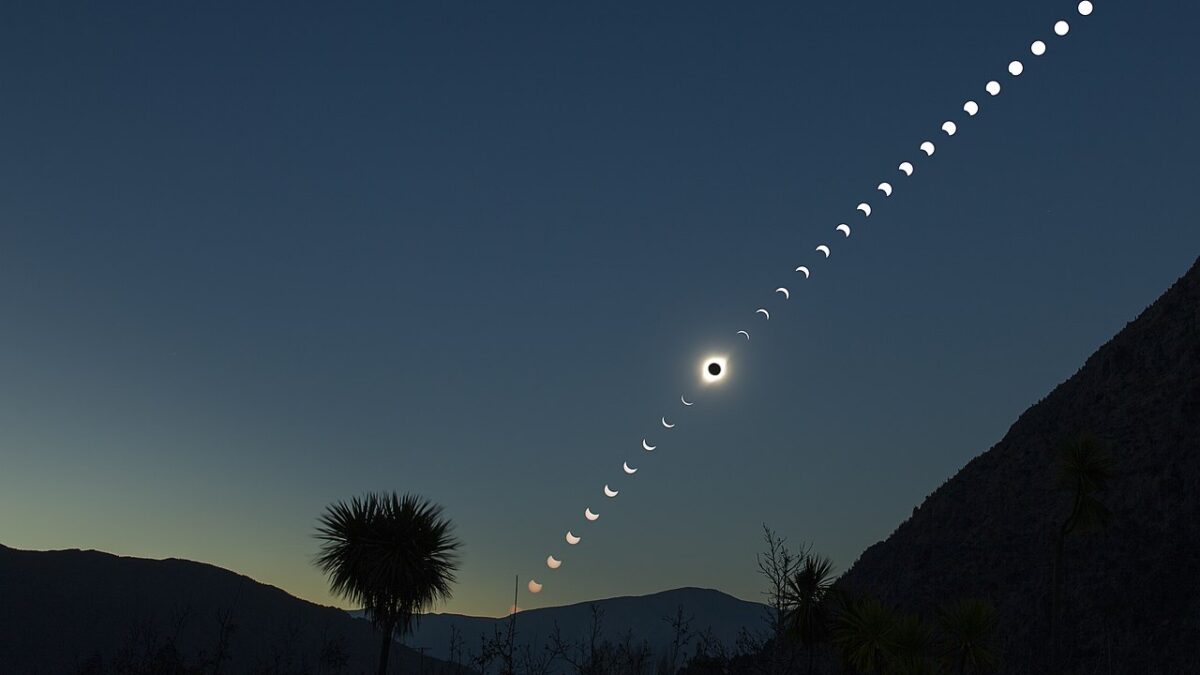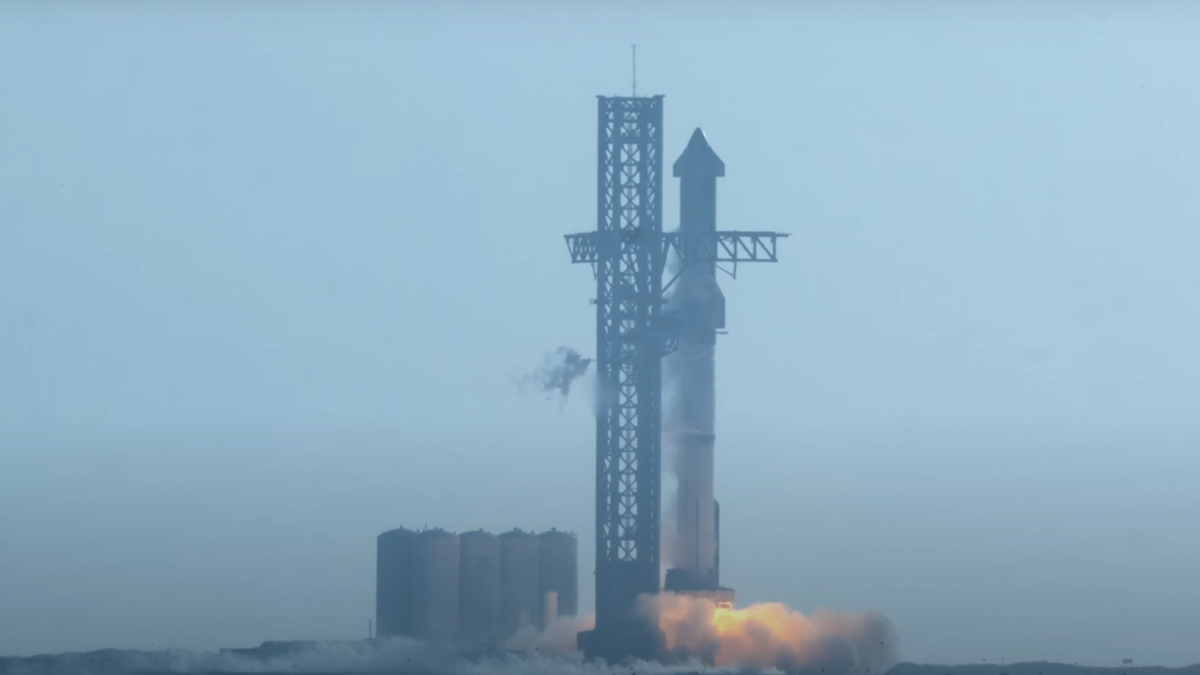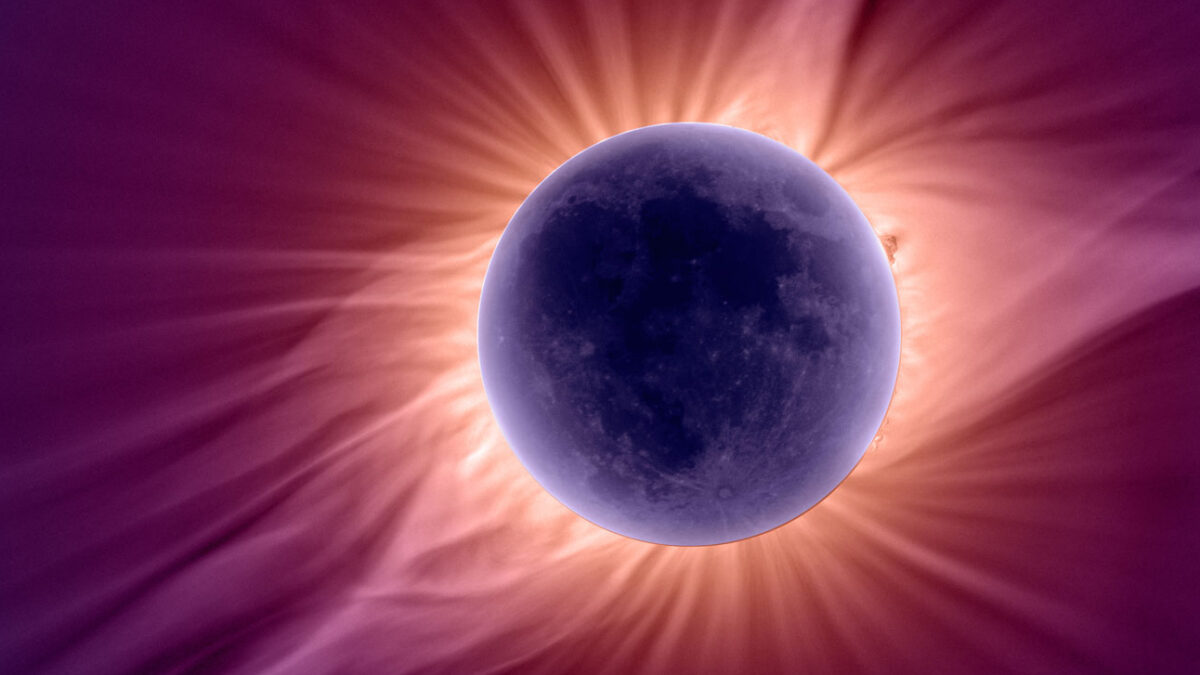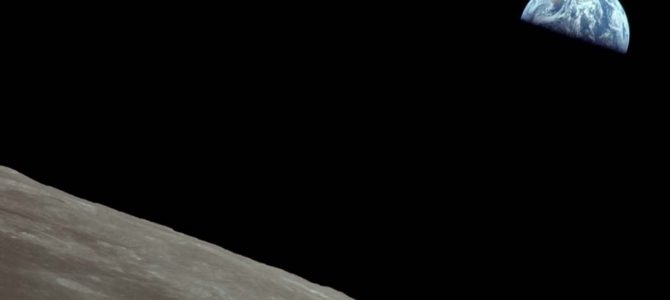
Anyone who has read history intuitively realizes that humans can be (and have been) cruel and destructive. With great ingenuity, humans have also built monuments of grace and beauty, such as the Cheops pyramid at Giza (26th century BC), the Parthenon in Athens (fifth century BC), the Colosseum in Rome (first century), the Chartres cathedral (13th century), etc.
A touch of melancholy graces these achievements, for although not technical dead ends, these precursors didn’t usher in an ongoing legacy. Instead, they stand as mute testimony of our predecessors who possessed more apparent talent and devotion to build something magnificent than we can imagine ourselves doing today.
In the space arena, while Americans share the International Space Station in earth orbit with many other nations, we’ve been dependent on Russian spacecraft to ferry us there since the end of Space Shuttle operations nine years prior. Not so long ago, we seemed to be masters of our fate, conquering the cosmos with slide-rules and bent sheet metal, and now we gripe about those whose cast down eyes bore into cell-phones while ignoring friends and neighbors.
Today marks the 50th anniversary of the Apollo 11 launch. The fourth manned launch of the massive Saturn V rocket needed to bring a modular spacecraft to orbit and land on the moon demanded the culmination of many sundry technological achievements. That story could and has filled many volumes. This is a thumbnail sketch of those developments and the impetus that drove them.
In April 1961, the Soviet Union launched Yuri Gagarin on Vostok, returning after a single orbit. The following month, NASA launched Alan Shepard in a Mercury capsule atop a Redstone missile for a sub-orbital flight. President John Kennedy then challenged the nation, with only 15 minutes of manned spaceflight experience, to an ambitious goal an address to Congress for additional appropriations. Technology depends on knowledge of physics and engineering, but major progress requires a practical goal pursued with politically motivated ambition.
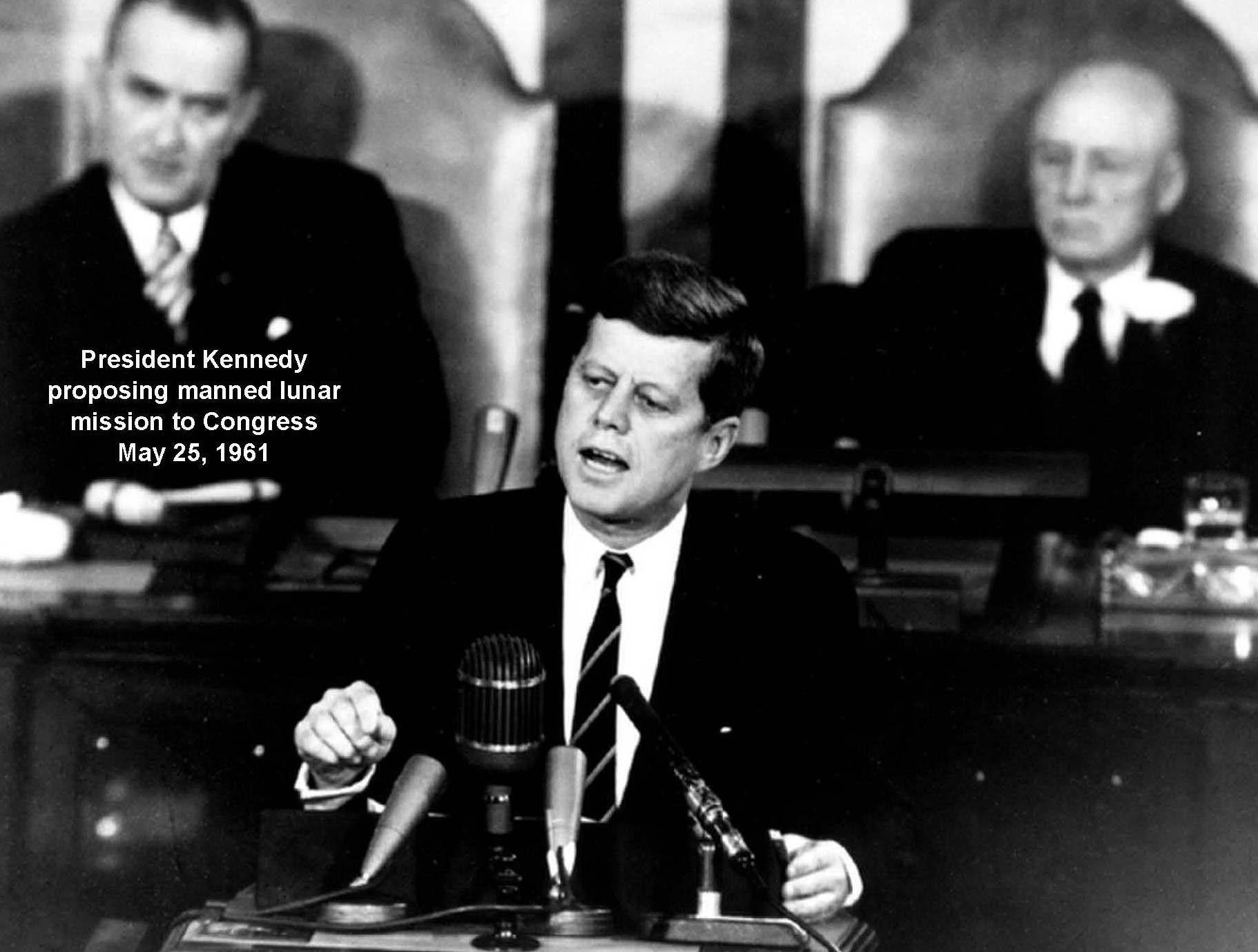
The National Aeronautics and Space Administration (NASA), established in 1958 in the aftermath of the Soviets’ coup of the first artificial satellite, had been tasked to launch men into low-earth orbit with the Mercury program. That daunting goal would not be reached for another nine months after this historic speech.
This new objective meant traveling not a few hundred miles above the atmosphere in a capsule of minimal maneuverability, but instead reaching a distance 1,000 times greater, landing on another celestial body, and then coming back safely. And in less than nine years. Yeah, good luck with that.
Several developments were needed to overcome these challenges: a method of approach, detailed knowledge of lunar terrain and surface composition, enormous rocket boosters, maneuverable spacecraft, and flight operations. All these capabilities involved separate requirements that integrated in the Apollo program, with miniscule margins of error.
Before the spacecraft could be designed, or even the performance of the rockets be decided, the technique for reaching lunar orbit had to be decided. Several ideas were proposed, each with advantages and drawbacks. John C. Houbolt (1919-2014), a NASA engineer at Langley, introduced and aggressively argued for lunar orbital rendezvous, or LOR. This approach required mastering rendezvous and docking in orbit, involving non-intuitive forces for success. Gemini spacecraft were designed and flown to practice such maneuvers after Mercury ended.
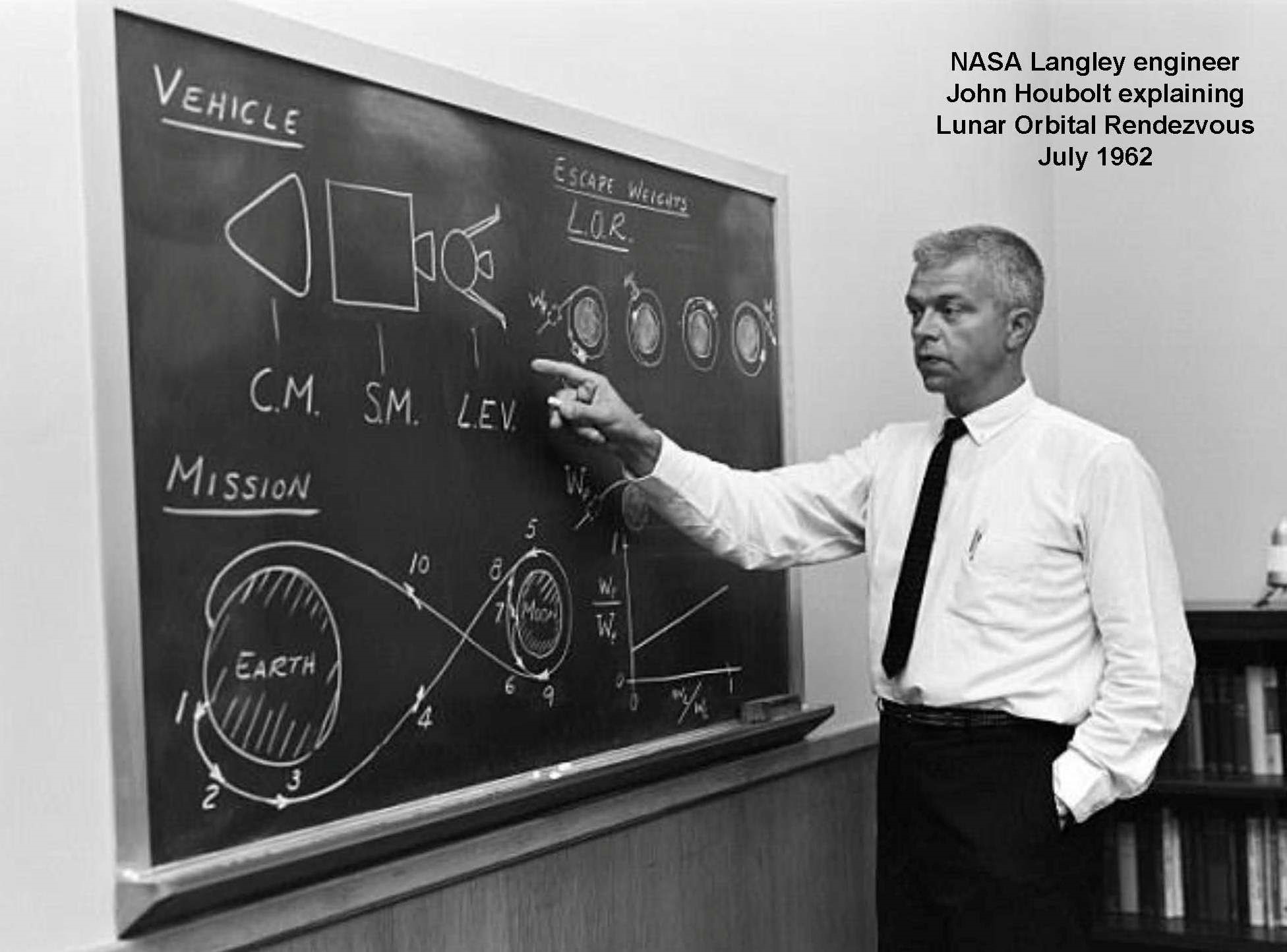
LOR required subdividing the mission into separate spacecraft launched on a single booster—trading high risk for reduced cost and schedule. The modular vehicles included a command module (CM), service module (SM) and lunar module (LM). The vehicles needed to be able to separate for their separate missions, and join together at critical junctures, whether in earth orbit, lunar orbit, or in transit there between.
The LM would be further divided into descent and ascent stages. The former would land on the moon and serve as a platform for the latter to launch from, and then rendezvous with the CM.
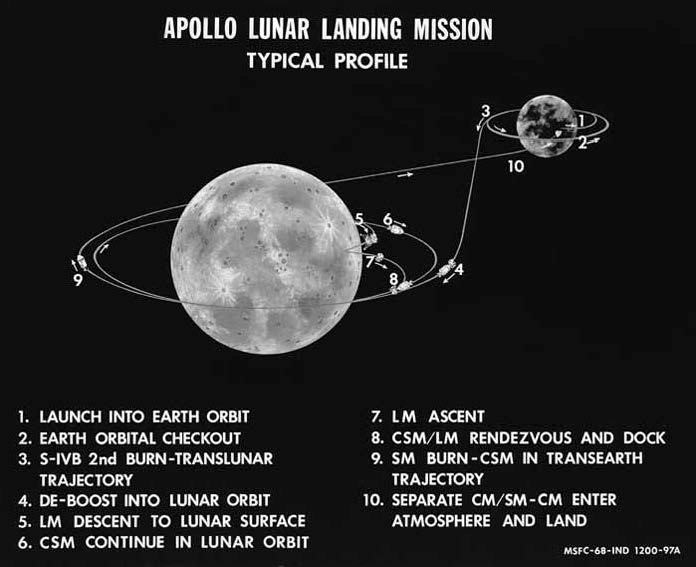
More detailed maps of the moon would be required than were available from ground-based telescopes. To this end NASA embarked on sending robotic precursors. Ranger, implemented by Jet Propulsion Laboratory (JPL) and launched atop an Atlas-Agena, approached the moon photographing the surface near possible landing sites prior to crashing. Nine such probes were launched between August 1961 and March 1965, of which four successfully transmitted images.
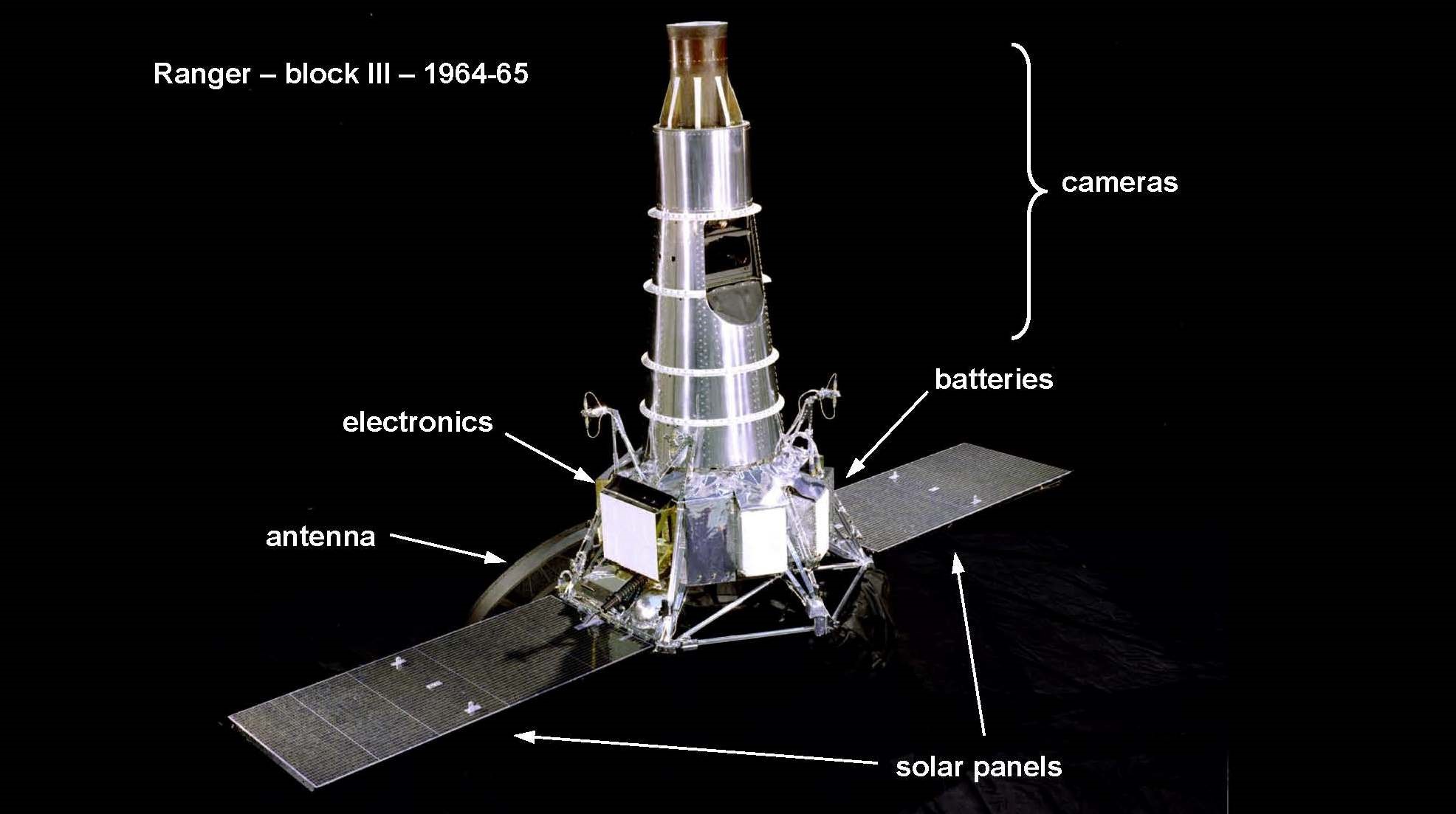
Ranger’s successor from JPL and launched by an Atlas-Centaur, Surveyor, followed for soft landing and to test for soil composition. Between June 1966 and January 1968, five out of seven successfully landed. Surveyor V landed about 15 miles north of the site for Apollo 11 in Mare Tranquillitatis. Apollo 12 LM Intrepid landed about 600 feet from Surveyor III in Oceanus Procellarum.
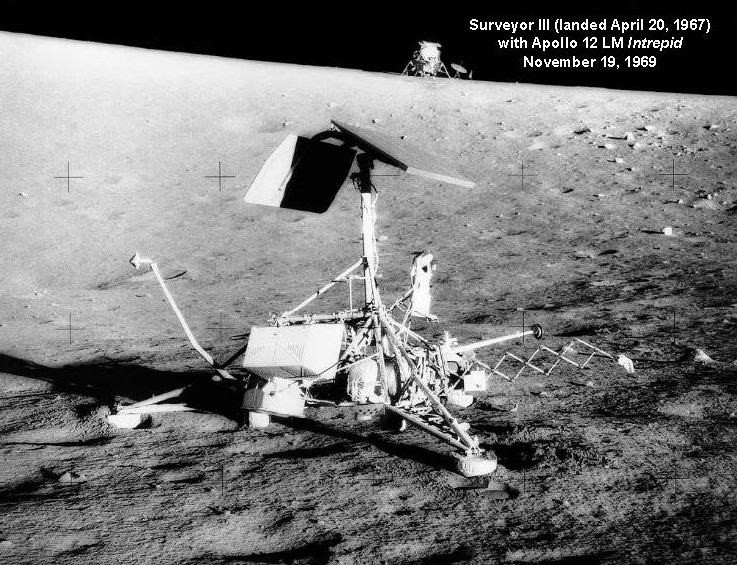
In the meantime, rocket boosters had to be developed, and precursor spacecraft flown to test maneuvering procedures and equipment. Mercury introduced a man into space starting in 1961 with two Redstone launches. Manned launches into orbit were conducted four times by the Atlas intercontinental ballistic missile (ICBM) from 1962 to 1963. All six capsules landed in the ocean (unlike Soviet spacecraft) to retrieve the astronauts by naval aircraft carriers.
Designed by Maxime A. Faget (1921-2004), the Mercury capsule weighted 1.5 tons. Born in British Honduras (now Belize), he graduated with a bachelor’s in mechanical engineering from Louisiana State in 1943, followed by service in the Navy. Hired in 1946 at Langley for the National Advisory Committee on Aeronautics (NACA) and its successor NASA, he worked on numerous projects before transferring to Spaceflight Center in Houston in 1962 to direct development of Gemini and Apollo spacecraft. In “Apollo: The Race to the Moon,” Charles Murray (yes, that one) and his wife Catherine Bly Cox describe the contributions of the design team.
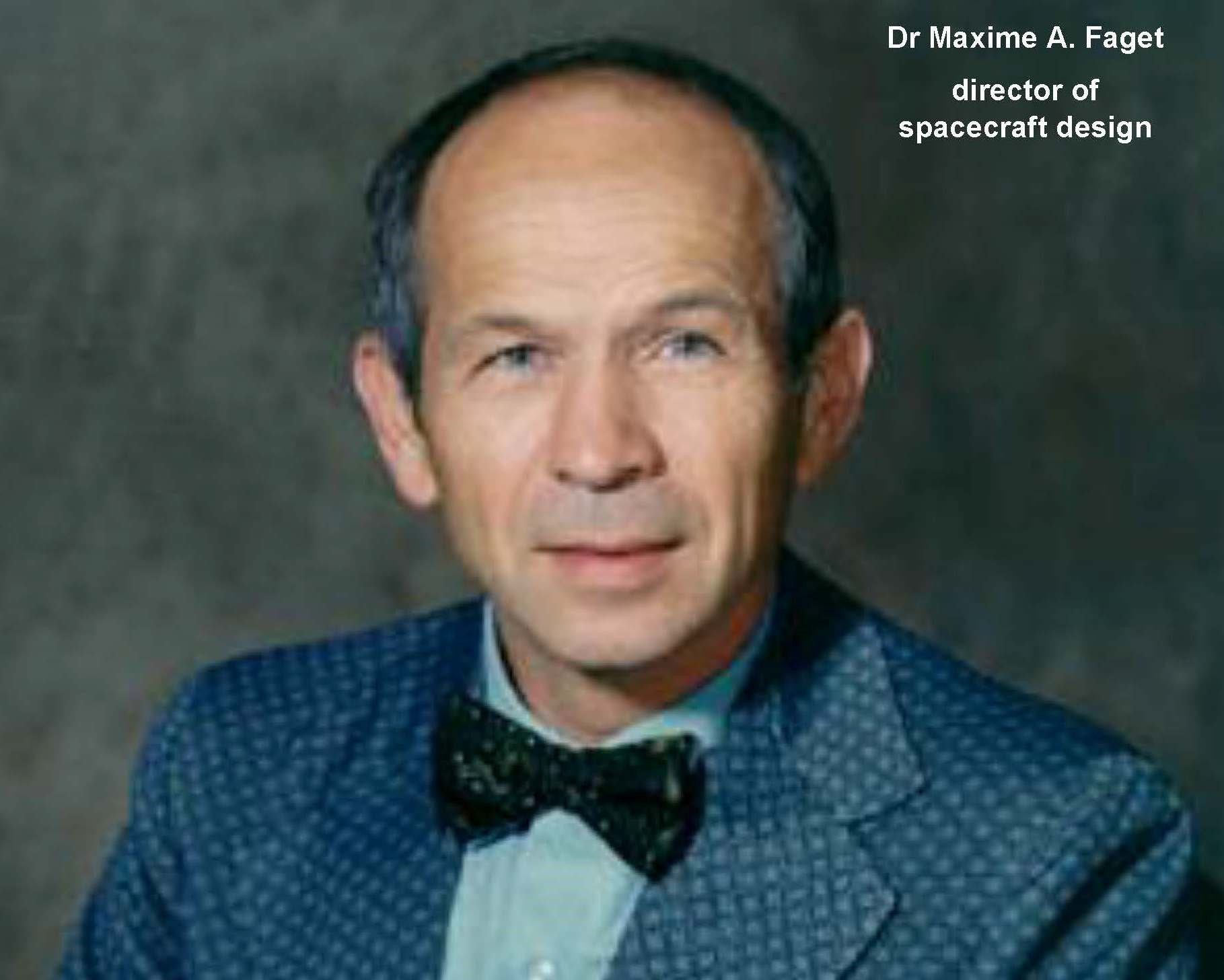
Gemini succeeded Mercury with a cabin for two astronauts attached to separate power and attitude rocket modules. Two unmanned and ten manned launches were conducted from 1965 through 1966 to evaluate system and human endurance in space, as well as orbital maneuver for rendezvous and docking. The Gemini capsule weighed 4 tons and was launched into orbit by the Titan II ICBM.
The modules of Apollo included the command module: a conical life support cabin and control systems to sustain three astronauts on a week-long journey and reenter the atmosphere, the service module: a container for propulsion, maneuver, electrical power supply, and other equipment to approach the moon and return; and the lunar module: a landing vehicle for descent to the lunar surface. The command and lunar modules had to dock together and separate from each other.
The command and service modules (CSM) operated together until shortly before exposure of the command module’s heat shield for reentry into the atmosphere to bring the astronauts to a splashdown zone. Apollo spacecraft, necessitating 32 tons transitioned to the moon, necessitated larger boosters: the Saturn IB to launch the CSM into earth orbit and Saturn V to accelerate the CSM and LM to the moon.
The first manned CSM spacecraft was tested in earth orbit by Apollo 7 in October 1968. The first CSM reached lunar orbit by Apollo 8 in December 1968. The LM spacecraft was tested together with the CSM while orbiting the earth by Apollo 9 in March 1969. A dry-run of the CSM and LM approaching the moon (but without landing) was conducted by Apollo 10 that May.
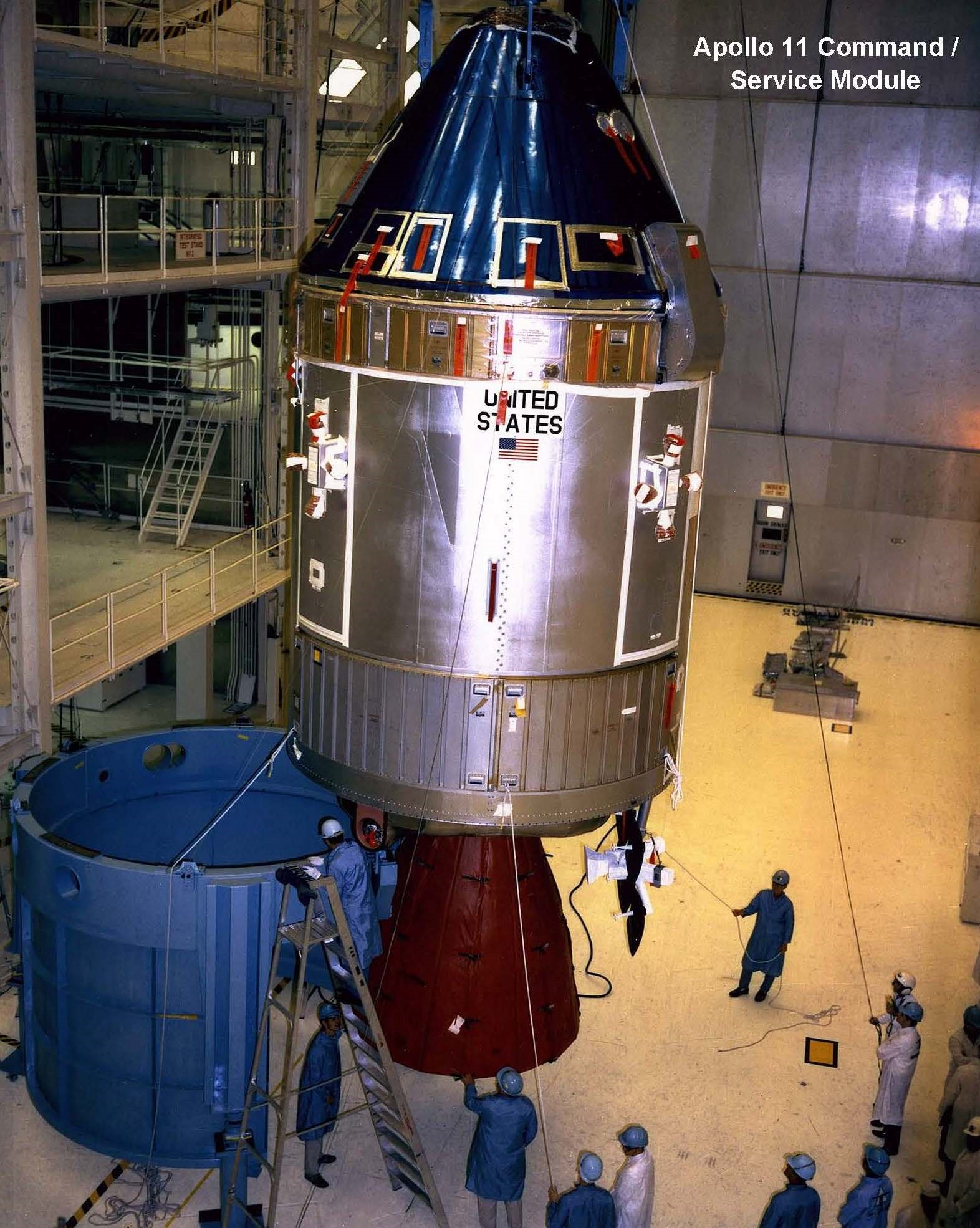
The architect for the massive boosters needed to take Apollo to the moon was Wernher von Braun (1912-1977). After receiving his PhD in 1934 from the University of Berlin, he led development of the first ballistic missile for Germany used to attack Antwerp and London. At the end of the Second World War, he surrendered to the United States and was appointed to continue rocket research at White Sands, New Mexico and then at the Army Redstone Arsenal in Huntsville, Alabama.
Finally authorized to launch America’s first satellite in the wake of two Soviet satellites and the first failed Vanguard attempt in 1957, his Redstone team launched Explorer I at the end of January of the following year. Appointed director of the George C. Marshall Space Flight Center (MSFC) in July 1960 until he retired in January 1970, he oversaw the design for the Saturn family of multi-stage rockets. These behemoths were intended solely to launch large payloads into orbit, rather than for ballistic weapons delivery, which eventually concentrated on solid propellant to minimize maintenance.
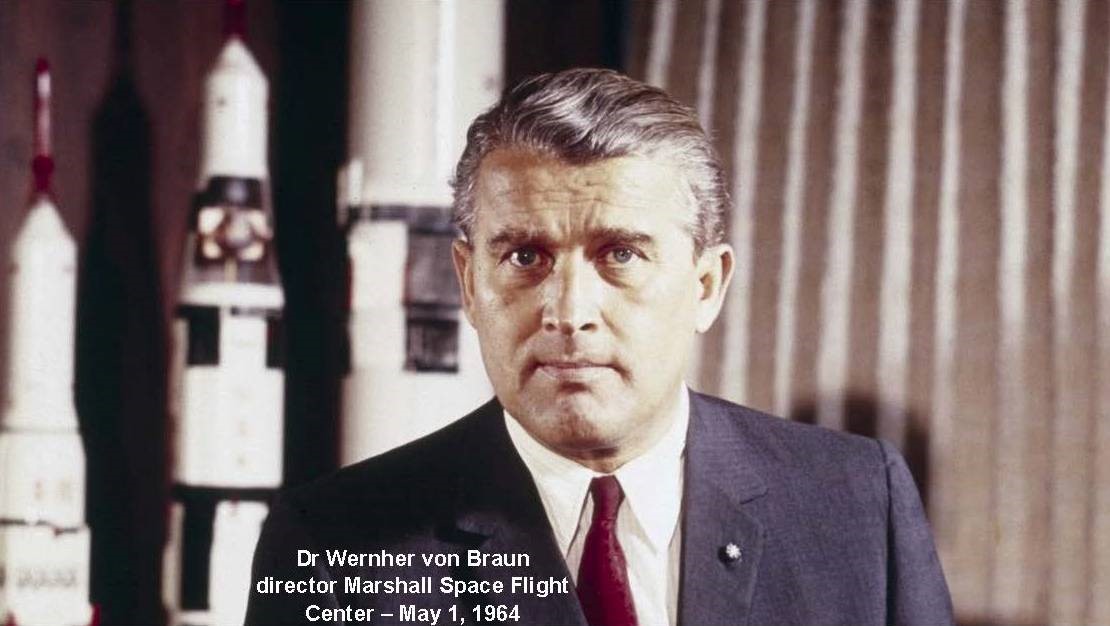
Escorting President Kennedy and Vice President Lyndon Johnson at MSFC in Huntsville on September 11, 1962, von Braun introduced the executive leaders to the Saturn I in the hanger.
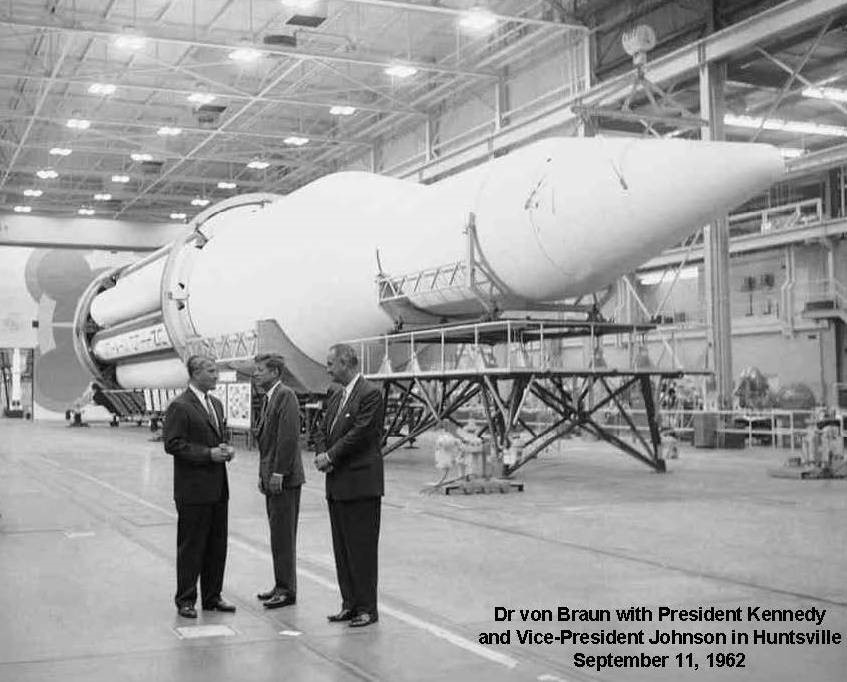
The next day, JFK delivered his “we choose to go the moon” speech at Rice Stadium in Houston, Texas. Listening to that stirring exhortation with dry eyes can be difficult a former engineer like me.
The exploration of space will go ahead, whether we join in it or not, and it is one of the great adventures of all time, and no nation which expects to be the leader of other nations can expect to stay behind in the race for space…. Those who came before us made certain that this country rode the first waves of the industrial revolutions, the first waves of modern invention, and the first wave of nuclear power, and this generation does not intend to founder in the backwash of the coming age of space. We mean to be a part of it – we mean to lead it. For the eyes of the world now look into space, to the moon and to the planets beyond, and we have vowed that we shall not see it governed by a hostile flag of conquest, but by a banner of freedom and peace. We have vowed that we shall not see space filled with weapons of mass destruction, but with instruments of knowledge and understanding…. We set sail on this new sea because there is new knowledge to be gained, and new rights to be won, and they must be won and used for the progress of all people. For space science, like nuclear science and all technology, has no conscience of its own. Whether it will become a force for good or ill depends on man, and only if the United States occupies a position of pre-eminence can we help decide whether this new ocean will be a sea of peace or a new terrifying theater of war. I do not say the we should or will go unprotected against the hostile misuse of space any more than we go unprotected against the hostile use of land or sea, but I do say that space can be explored and mastered without feeding the fires of war, without repeating the mistakes that man has made in extending his writ around this globe of ours…. here is no strife, no prejudice, no national conflict in outer space as yet. Its hazards are hostile to us all. Its conquest deserves the best of all mankind, and its opportunity for peaceful cooperation many never come again. But why, some say, the moon? Why choose this as our goal? And they may well ask why climb the highest mountain?… We choose to go to the moon. We choose to go to the moon in this decade and do the other things, not only because they are easy, but because they are hard, because that goal will serve to organize and measure the best of our energies and skills, because that challenge is one that we are willing to accept, one we are unwilling to postpone, and one which we intend to win…, and the others, too.
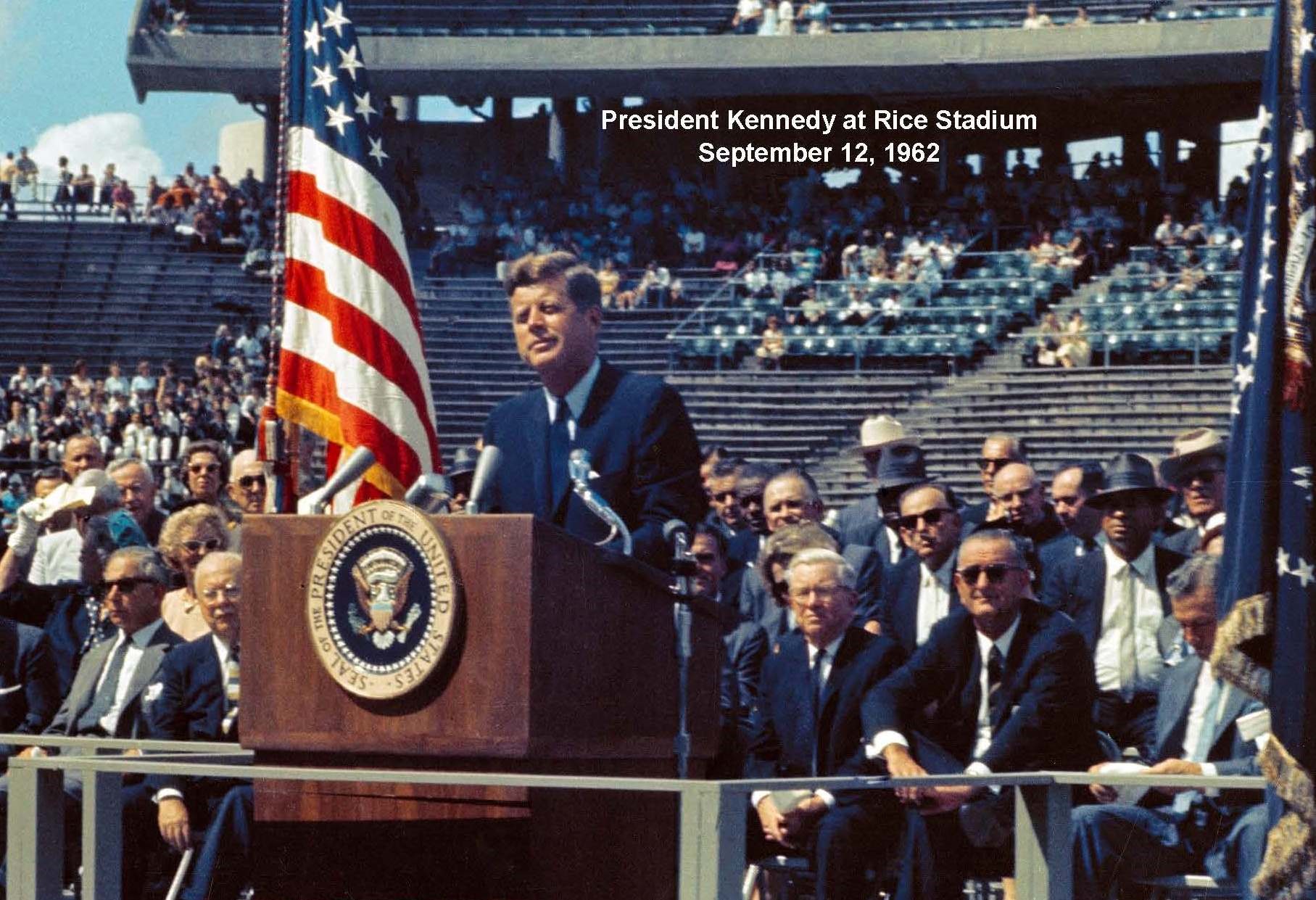
Von Braun greeted President Kennedy again at Cape Canaveral, Florida on November 16, 1963—less than a week before the president’s assassination in Dallas, Texas. This bears emphasis because broad political support and dedicated funding are necessary to complete such, ambitious projects. Otherwise, they often fail. The president stood at the launch pad of a 180-foot high Saturn I that launched two months after his visit.
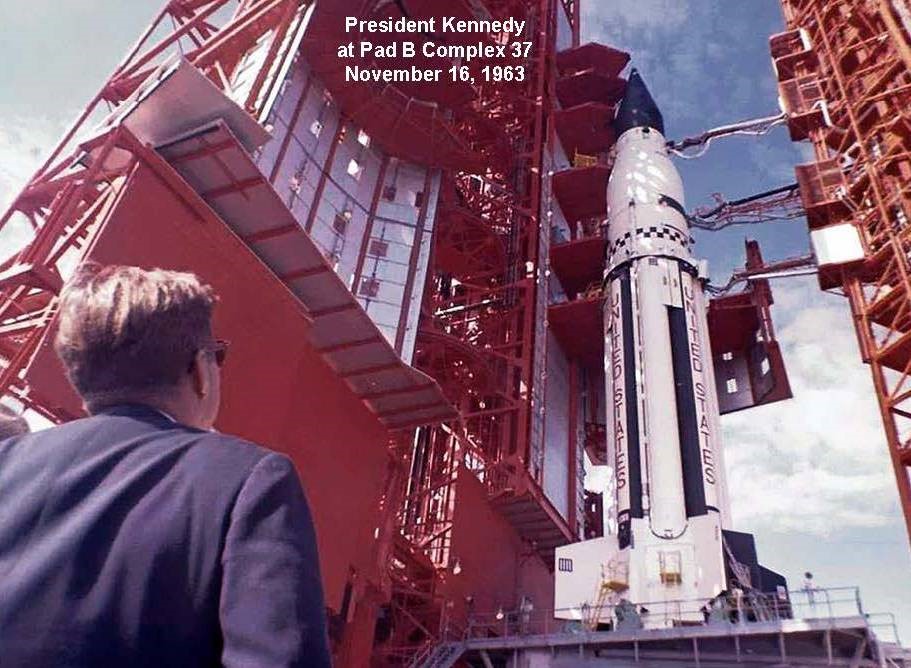
America’s launch vehicles for manned spacecraft from the 1960s can be compared in the image below. The Saturn family included the Saturn I that President Kennedy witnessed with the S-I first stage and eight H-1 kerosene-oxygen engines from Rocketdyne. Its immediate upgrade, the Saturn IB, included the S-IV second stage with six RL-10 hydrogen-oxygen engines from Pratt & Whitney.
This second stage was subsequently replaced by the S-IVB with a single J-2 hydrogen-oxygen engine from Rocketdyne. This same unit was also used for the Saturn V as the third stage. The Saturn I flew ten unmanned missions from 1961 to 1965. The Saturn IB flew four unmanned and six manned missions between 1966 and 1975.
The massive Saturn V had three stages in rising to 363 feet with the Apollo payload. The first stage was the S-IC with five F-1 engines from Rocketdyne that burned kerosene and liquid oxygen. The second stage was the S-II with five J-2 engines that burned liquid hydrogen and liquid oxygen.
The third stage was the S-IVB, which had been flight-tested on the Saturn IB. The Saturn V flew two unmanned missions in 1967 and 1968 (Apollo 4 and Apollo 6), then nine manned missions from 1968 through 1972 (numbers 8 through 17). Its final flight launched the Skylab space-station in 1973.
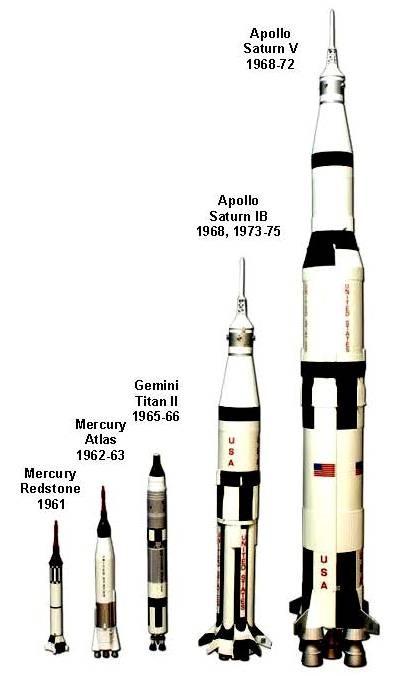
Several aerospace companies were contracted to design and build these stages: Boeing for the S-IC, North American for the S-II, Douglas for the S-IVB, Rocketdyne for the F-1 and J-2 engines, North American for the CSM, and Grumman for the LM. Development of the Apollo program engines, both for thrust and attitude control, is described in “Remembering the Giants” by Steven Fisher and Shamim Rahman. The intricate rocket engines equipped with precision turbo-pumps had to be integrated into the stages whose tanks contained their liquid propellants.
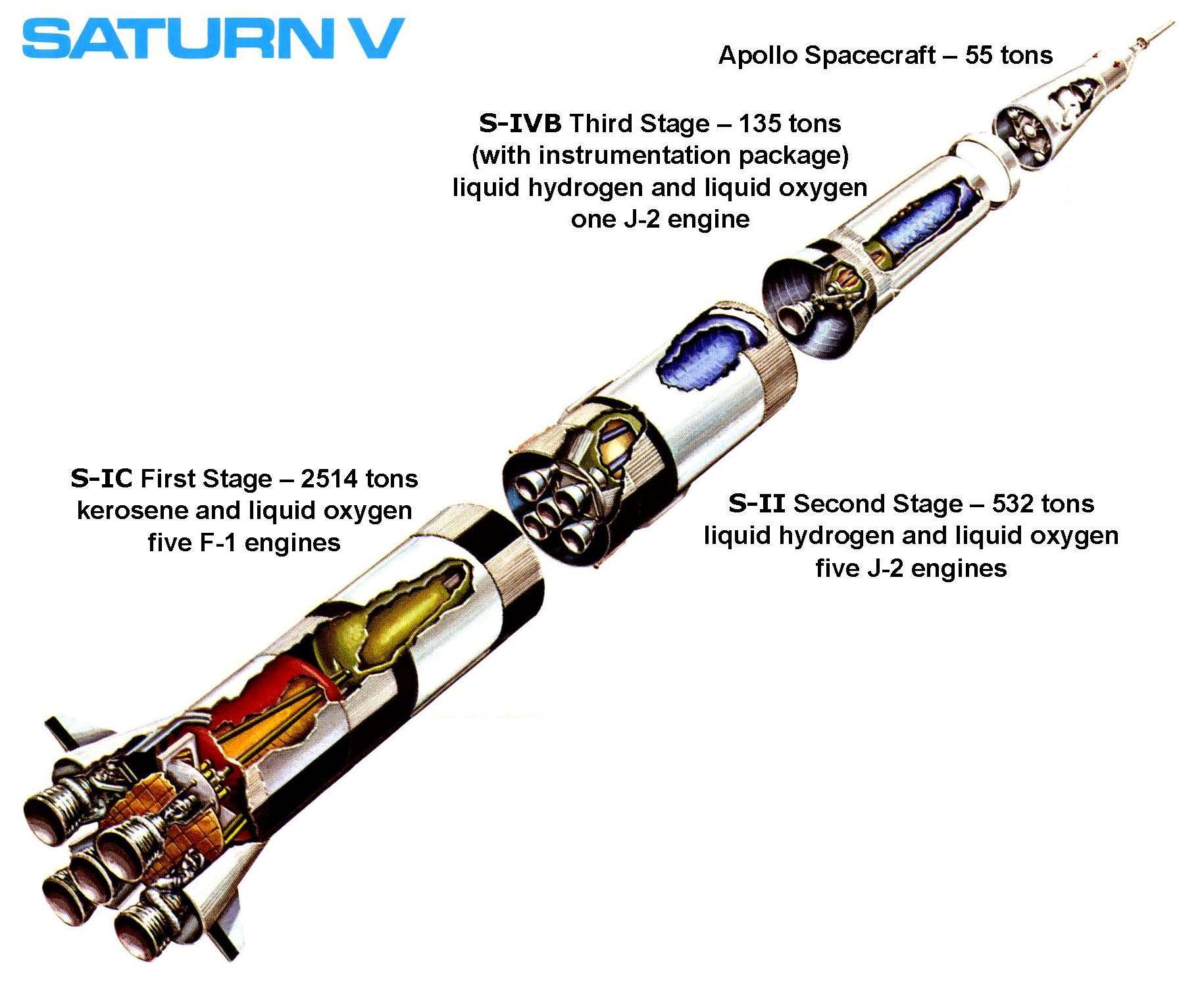
The stage was set. Many astronauts had trained and practiced the necessary maneuvers on Gemini and Apollo flights. The modular equipment had been tested, with failures and deficiencies identified and corrected. It was now time to begin the eight-day journey to the moon and back. Stay tuned.


